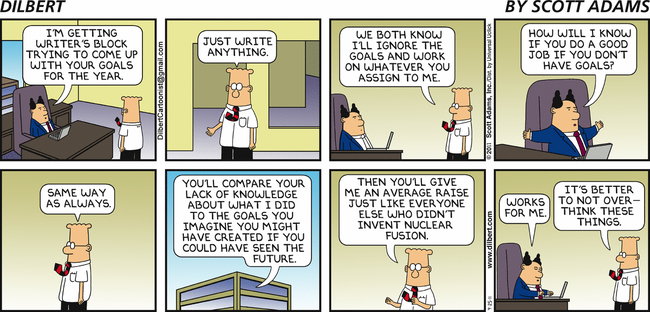
Photo by Isaac Smith on Unsplash
As we being to re-imagine how we work in a world and re-form the workplace post-COVID-19 one of the areas I’ve been thinking about lately is how organizations and managers should be tracking OKRs.
Where we are still operating in a remote environment one the most effective and powerful management tools we have at our disposal in these trying times are the goals we set for ourselves, our team, and our organization. It ensures individuals and functions are aligned to broader organizational goals and objectives, and places a long-overdue focus on overcomes over outputs.
This post looks at 7 things we should we should be doing as managers to maximize alignment.

Assuming you’re planning quarterly OKRs, kick-off planning a good 4 weeks before the new quarter. There is generally analysis, brainstorming, and communication that need to take place ahead of the new quarter. Even setting aside 1 hour to put pen to paper and start putting together a skeleton of the goals you and the team should be focused on for the next quarter will help ensure a successful planning cycle.
Goals should be set collaboratively with employees. That said, you also need to ensure alignment across other functions within an organization. If you’re a product leader, ensure you’re communicating goals across other key collaborators that will contribute to achieving desired goals. A simple and effective method I have is a checklist of all the different functions that I needed to review OKRs with, this included key peers in Product, Engineering, UX, Sales, SEO, Marketing, Support.
If you’re optimizing towards a measure, make sure everyone can report on the metrics in question. It’s even better if you can create dashboards that can highlight and track progress towards a goal. If you’re measuring in-product goals set up dashboards in Google Analytics, Salesforce, or if you’re measuring objectives towards project completion create a Jira dashboard.
As a product leader, it’s important to rally the broader team around the ambition you’re setting out to achieve in a particular quarter. If OKRs have been set cross-functionally you should paint a complete picture of what’s happening in the quarter ahead and focus on answering why it’s so important.
One of the key sessions I host with the engineering teams is a quarterly look-back and look forward session. Looking back at what has been accomplished from an output AND output perspective in just a 12 week period can serve as a massive boost to morale.

OKRs shouldn’t be a set and forget activity, well structured OKRs should drive discussions in 1:1s. Where goals are no longer relevant these can be refined or agreed to be abandoned altogether.
Weekly updates should follow the format of Progress, Plans, and Problems and be discussed in further detail in 1:1s to enable collaborative problem solving on real issues.
Transparency is really important, particularly in a world where remote working is more prevalent than a few months ago. As product leaders, you might find yourself knee-deep in the data all day, every day, however, how well do others know how things are performing? Are you attending a lot of status meetings? Could updates be communicated to a broader audience via email to ensure a wider audience plus interested parties are kept up to date? Would that allow for more targeted Q&A sessions in those regular status meetings?
One of the best VPs of Product I’ve worked for actually spent a good couple of hours on a Sunday curating written updates from his product team for broader distribution among the executive team and extended leadership across the organization.
As a department / function, reviewing progress on OKRs monthly will help celebrate the wins, share learnings, and enable discussion on challenges. At a minimum, it will be a forcing factor for updating whatever manual reporting is needed.
This might be as simple as setting up a 1-hour session to quickly grade yourself on progress so far and add commentary on where things are currently at. Sessions like this can help break down any silos that may exist within a function.
Enform.io integrates with Jira, Salesforce, Google Analytics, Slack, and Microsoft Teams enabling product and engineering leaders to share the latest data with additional insight and commentary overlayed on top and send to peers and stakeholders.
Get started now to send data-driven progress reports to clients and stakeholders.
Send your first update within minutes.